Looking Back at the White Man
The story of Julius Lips
James G. Harper and Philip W. Scher
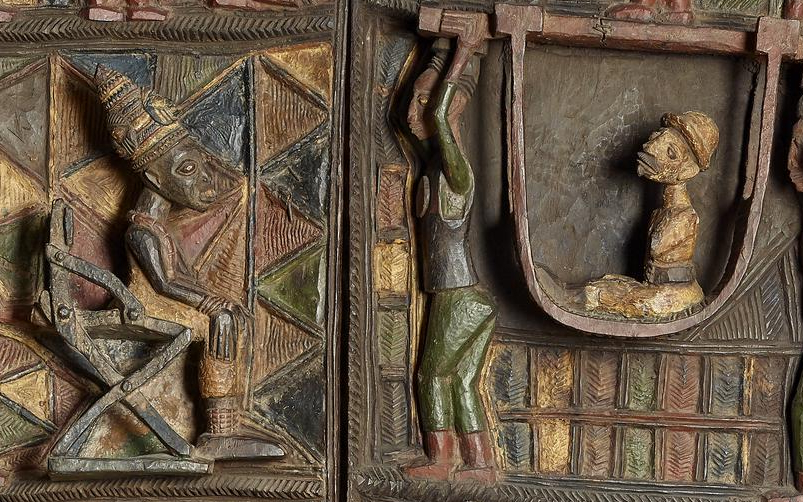
In January 1934, the eminent anthropologist Julius Lips sat in a small hotel room at the Hôtel des Nations in the Latin Quarter of Paris, staring down at a trunk full of cardboard-mounted photographs. It was about all he had with him, having fled Germany with no family, no means of support, and no clear conception of his future except the idea that he might make his way to the United States. The photographs in the trunk, collected over a decade and through an extensive scholarly and institutional network, were of artworks from around the world that depicted the figure of the European through non-Western eyes. Some wryly humorous, some outright insulting, these objects tell a different story than that which Europeans had told themselves during the age of colonialism. Lips intended his research to culminate in a groundbreaking book, the working title of which was “How the Black Man Looks at the White Man.”[1]
Back in Germany, Julius Lips had been a star on the rise: appointed director of the Rautenstrauch-Joest Museum in 1928 at the age of thirty-three, he was tenured as a senior faculty member at the University of Cologne just two years later. But with the rise of the Nazi party and Lips’s refusal to “coordinate” with the new regime, he was dismissed from his posts and his career came to a halt. His unwillingness to hand over the trunk full of photographs only further infuriated the authorities.[2]
The story of Julius Lips and his project unfolds against the background of the swift consolidation of Nazi power in 1933 and 1934, years that also saw the burning of the Reichstag, the German withdrawal from the League of Nations, and the establishment of the first concentration camp at Dachau. Though Lips and his wife, Eva, had noted the rise of Hitler, they’d initially assumed that ostensibly nonpolitical enterprises like museums and universities would be immune to political shifts. “Hitler,” Eva Lips would later remember having blithely said at the outset, “why, that’s the man in the cheap newspapers. It can’t be serious. … But what concern is it of ours? Papen, or Hitler, or another; it’s all the same to us.”[3] As it turned out, it was not “all the same,” and Hitler’s men moved quickly to solidify control over the cultural and intellectual life of Germany. As part of their strategy, they actively co-opted the nation’s centers of knowledge to reinforce the party’s ideology and encourage a growing policy of racial purification. Julius Lips’s story is just one example of what Stephanie Barron has called “the microscopic attention the Nazi hierarchy accorded the observation and regulation of all aspects of cultural life in the Reich.”[4]
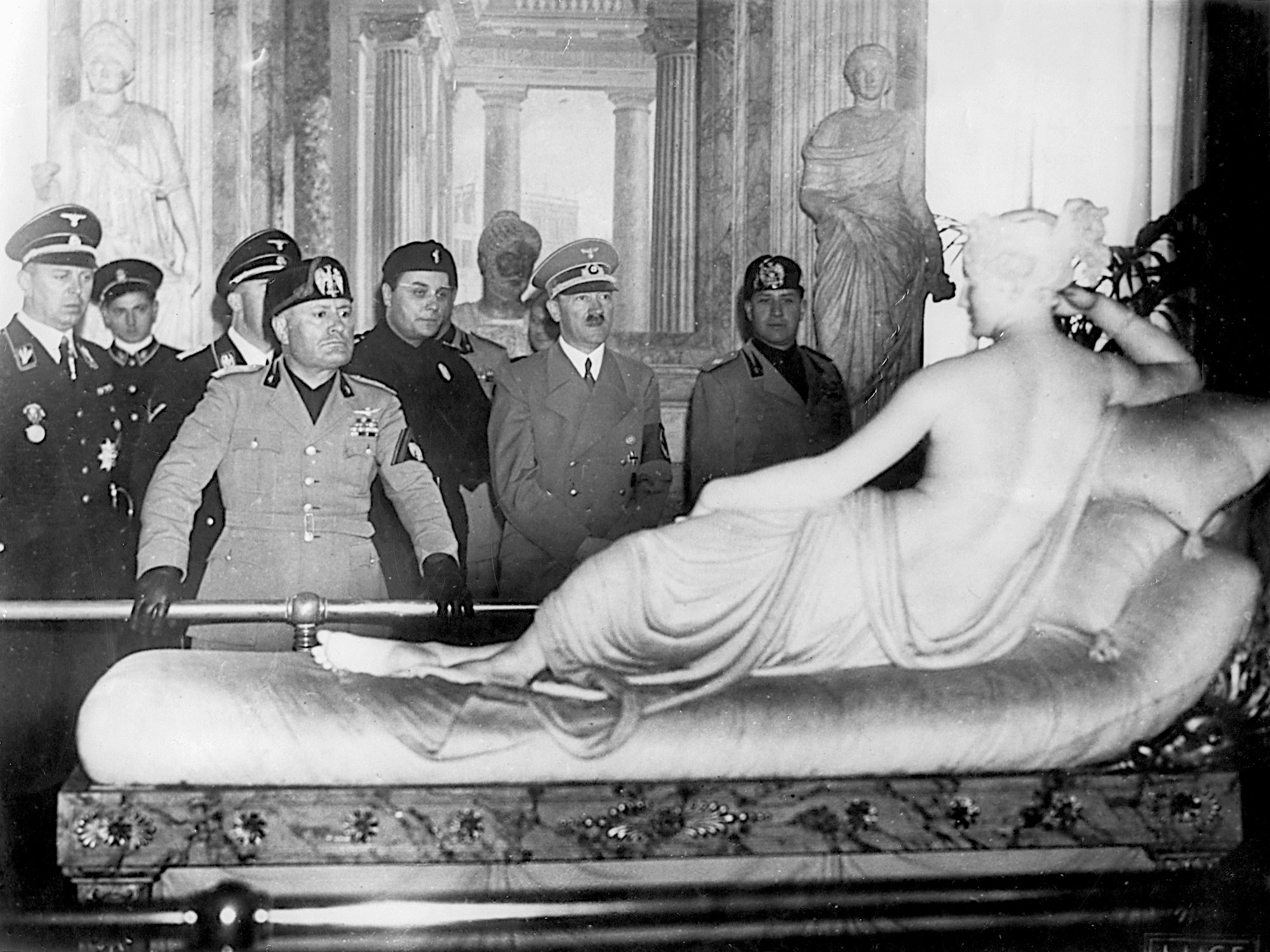
When Julius Lips was dismissed from his museum directorship in early 1933, the government replaced him with one of the least capable, but most politically reliable, of his protégés. This new director, in collusion with the local state and party authorities, initiated a program of harassment and intimidation against Lips, his former academic advisor, using search warrants, false accusations, lawsuits, and threats in an attempt to convince him to turn over the research materials for “How the Black Man Looks at the White Man.” The project was dangerous, after all. Exhibited together or published as a collection, the images would lead any thoughtful observer to reconsider European identity and to question commonly held assumptions about the moral and ethical superiority of the West. This could only undermine the vision of a racially charged geopolitics that the Nazi party promoted. As a reviewer for The Pittsburgh Press observed in 1938, after Lips’s book and his wife’s account of the couple’s struggle had both been published, “No two books will do more damage to the Nazi pretense to a pure culture than Julius Lips’ The Savage Hits Back, published last fall, and Eva Lips’ Savage Symphony (Random House), which appears now.”[5]
Unlike many of his colleagues, who were willing to steer their research projects toward Nazi-friendly goals, Lips arranged to have his trunk of photographs hidden and then smuggled to France.[6] A few months later, he managed to slip out of the country himself. Having failed to get their man, the Brownshirts had to content themselves with poisoning the beloved dog that Lips had left behind. The man who had agreed to adopt the German boxer was surprised to find the animal dead on the lawn a few weeks later. Nearby was a swastika-decorated note that read, “To Professor Lips: He who will not yield to Hitler deserves to die like a dog.”[7]
Most of the material in the “How the Black Man Looks at the White Man” project was African, Indigenous Australian, or Oceanic, the sort of art regarded by early twentieth-century Europeans as “primitive.” But while the avant-gardes of modern Paris, Barcelona, and Berlin lionized the “primitive,” seeing in its abstraction a liberating path to aesthetic renewal, Nazi taste, which embraced sentimental depictions of virtuous motherhood and the heroic nudity of Greco-Roman classicism, deplored it. A watershed moment for the expression of official taste (and what was explicitly anathema to it) came in 1937 with the state-sponsored “Degenerate Art” exhibition in Munich. The cover of the exhibition catalogue featured Otto Freundlich’s monumental primitivist sculpture The Large Head, and scores of other primitivist works were singled out in the show as negative examples. In his remarks at the opening, Adolf Ziegler, president of the Reich Chamber of Visual Art, slammed the avant-gardes, asserting that in their work “the menial and the base were elevated to high ideals” and “the most hideous standards of ugliness became the epitome for standards of beauty.”[8]
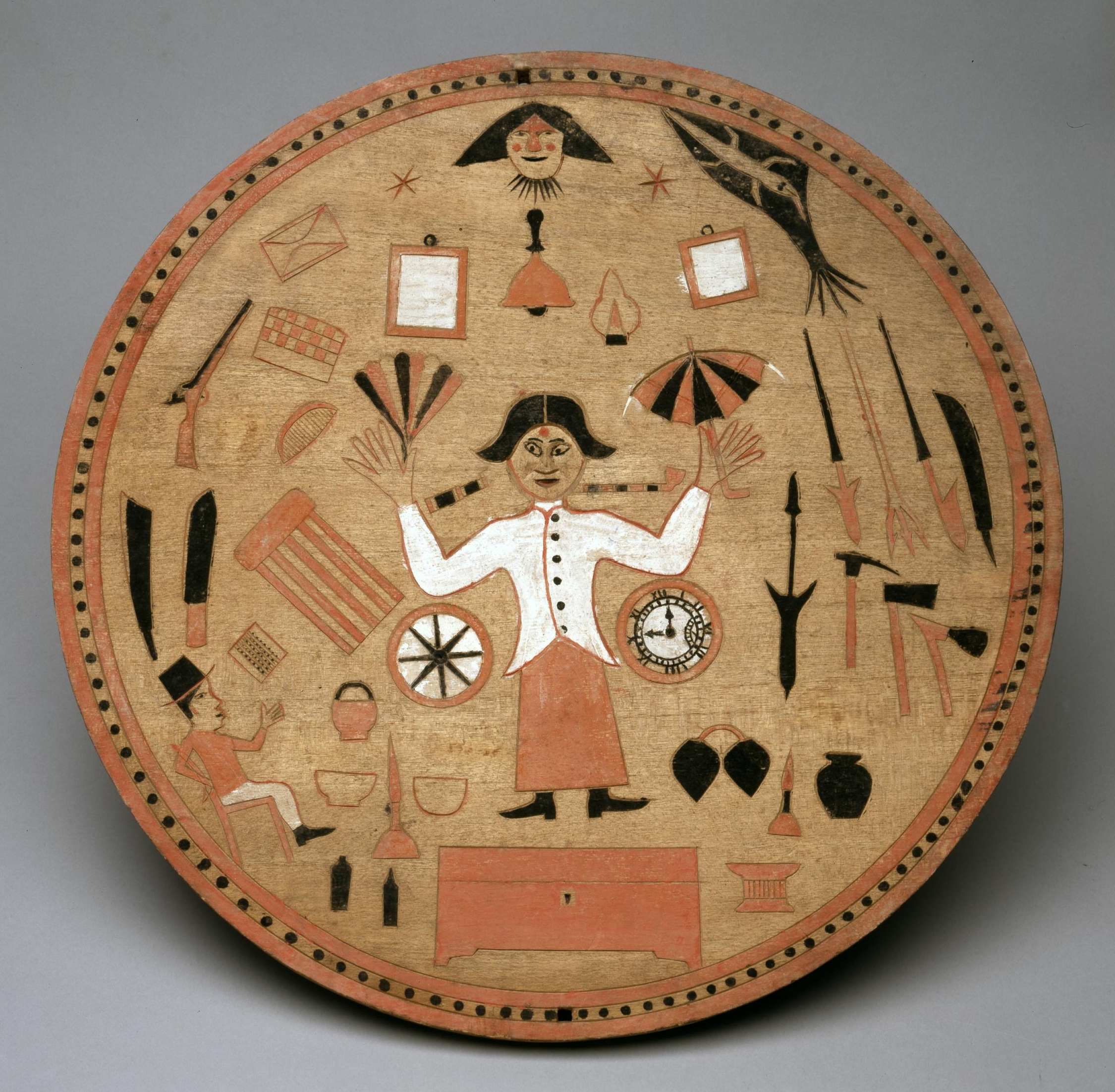
If art influenced by the “primitive races” was considered dangerous and degenerate, Julius Lips’s project, which gave voice to those races even as they mocked the Europeans, was intolerable. This was one of the aspects that attracted the London publisher Lovat Dickson to Lips’s book. The publishing house gave the author a generous advance, money that enabled Julius and Eva Lips to resettle in the United States. Dickson, an ardent anti-fascist, also encouraged Lips to write a preface recounting the story of how the Nazis did their best to suppress the research. The project was published in 1937, with a striking new title—The Savage Hits Back, or, The White Man through Native Eyes.
The book featured hundreds of objects, from a wide variety of cultures and historical periods, by artists whose societies had either recently come into contact with, or been actively colonized by, European explorers, missionaries, military men, and traders. The images did not reflect the self-satisfied mythos of Europeans as “gods,” or as superior people who bestow marvelous benefits upon grateful societies. To the contrary, what had inspired Lips’s project was the fact that the works of art he saw were, in his words, “so sharp in their criticism and so true, that the onlooker was tempted to shroud his face before them.”[9]
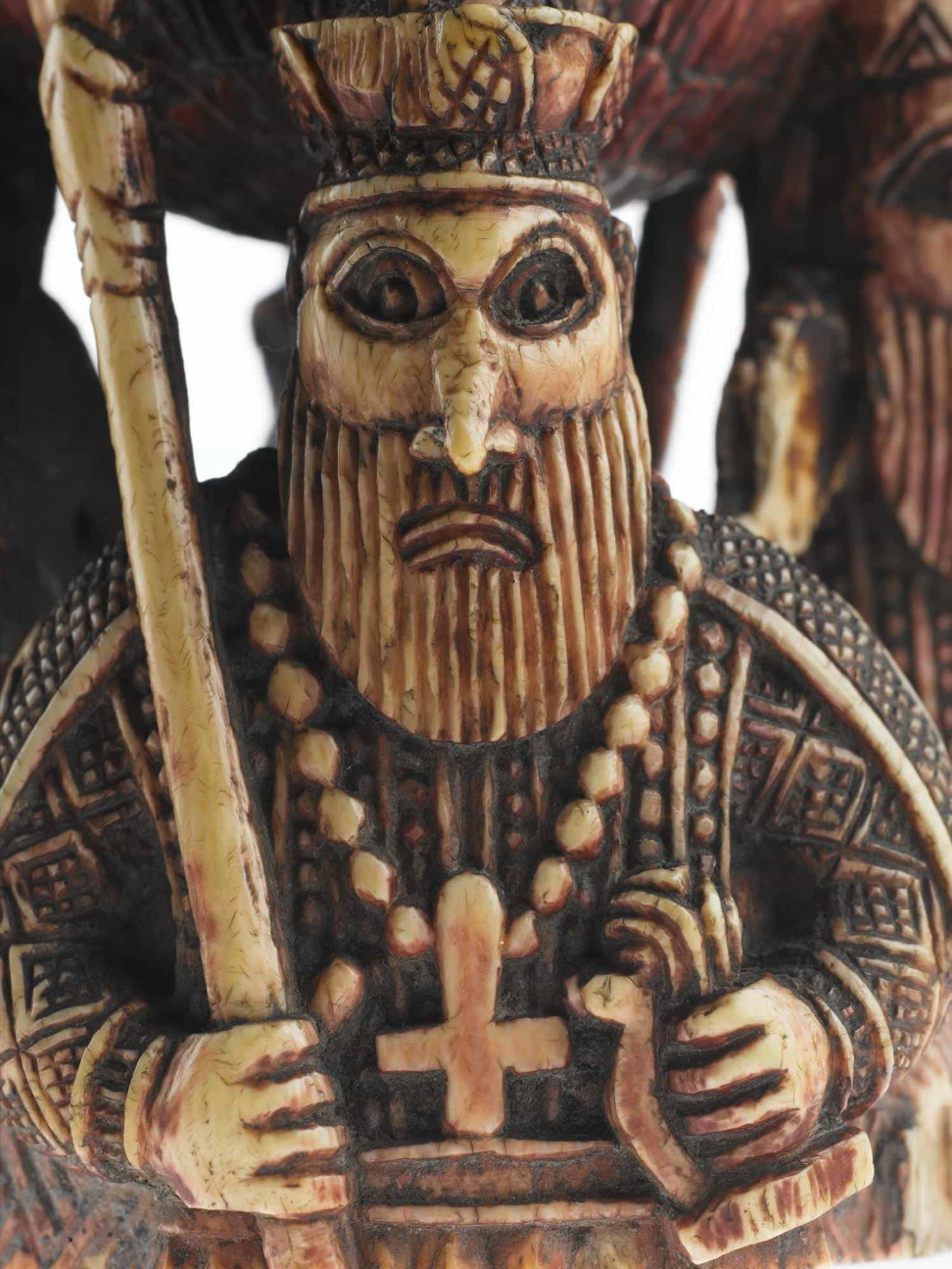
The material in The Savage Hits Back encompassed sculpture, painting, ceramics, and other decorated objects, and spanned from the fifteenth to the twentieth century. It concentrated most heavily on the more recent periods, and on Africa and the South Pacific. Lips divided his treatment of the artworks and their vision of Europeans into chapters, the first of which featured artifacts that focused on the foreigners’ ships. Subsequent chapters were organized according to the role played by various Europeans, with a chapter each for the soldier, the civilian, the missionary, the merchant, and the colonial official. The penultimate chapter was titled “The White Woman” and the final one was devoted to the representation of distant monarchs, such as Queen Victoria and Kaiser Wilhelm—Lips titled this chapter “The Chieftains of the Whites.” Viewed in the home context of each artist, the idea of the western European as a strange foreign exotic is natural and almost obvious. And despite the fact that the book has many flaws—both in terms of its historical knowledge and its interpretations of the specific artifacts it includes—it is, in its totality, astonishing.
It is also noteworthy for its fundamental reimagination of what anthropologists were supposed to be doing. In the introduction he wrote for the book, Bronislaw Malinowski, at the time perhaps the best-known anthropologist in the world, called The Savage Hits Back “one of the first contributions to real anthropology—first in rank and first in priority of time.”[10] Malinowski explains that, for him, “anthropology is the science of the sense of humour.” The passage is worth quoting at length:
For to see ourselves as others see us is but the reverse and the counterpart of the gift to see others as they really are and as they want to be. And this is the métier of the anthropologist. He has to break down the barriers of race and of cultural diversity; he has to find the human being in the savage; he has to discover the primitive in the highly sophisticated Westerner of to-day, and, perhaps, to see that the animal, and the divine as well, are to be found everywhere in man.[11]
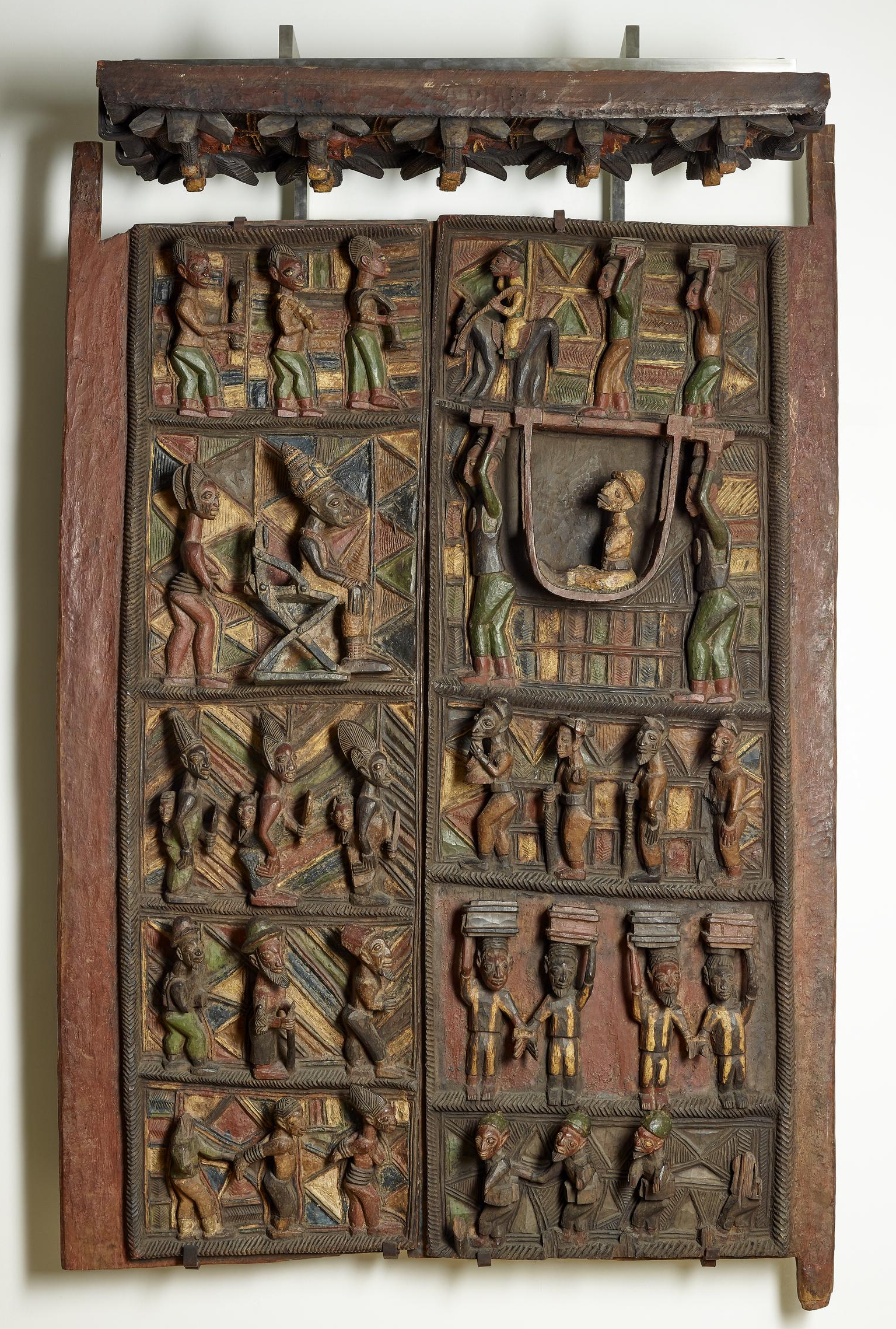
Early twentieth-century door panels by Yoruba artist Olówè of Isè from the palace of the Ogoga (king) of Ikere in present-day Nigeria. In the second row, the Ogoga and his wife face Captain W. G. Ambrose, a British commissioner traveling in a hammock. Lips was attracted to this object, with its vigorous carving and sharp characterizations, but his interpretation of the reliefs was limited by his ignorance of its context and perhaps also by the photograph from which he was working. On the Ambrose figure, whom he mistook for a merchant, Lips wrote that “the man in the litter, with his face turned to heaven, wears an air of near-martyrdom. He seems to be an ill-tempered grumbler, whom no one can please, and who, when he does actually pull a coin from his pocket, wants value from every cent.” The anthropologist’s claim that the porters are laughing at the man seems imaginative.
In fact, the carvings commemorate the reception of the newly appointed British imperial administrator at the Ogoga’s palace. Offering an African perspective on British colonialism at the very moment that the British were consolidating authority in the region, the composition of the panels sets up a parallel between the Ogoga, enthroned in the most important spot (eye level, at center) on the left door, and Ambrose, positioned in the corresponding spot on the right door. Their twinning parallels the system of shared authority under the British protectorate, which maintained local rulers and exerted authority through them. In the image, each figure enjoys prestige: one the prestige of being seated, and the other that of being carried. But the prestige of being the host trumps all. Courtesy British Museum.
Malinowski saw the challenge the book posed to the field of anthropology as it existed in the 1930s—and to some degree as it exists today. The field was, in part, built on a quest for cultural purity. Its scientific demands required the presence of “untouched” peoples whose behaviors and institutions could be mined as examples of frozen stages of human evolution, or laboratories of human cultural development, seen in isolation from external influence. Lips dispenses with any interest in such things. Grounding his argument instead in colonialism and contact, he takes up the question of what we would now call “globalization.” Malinowski laments in the introduction that anthropologists had not taken up the political causes of the people they studied, and had not bothered to comment on the social, political, and economic conditions in which they lived. As he says, the anthropologist, “enamoured of the unspoiled primitive, lost all interest in the native enslaved, oppressed, or detribalized.”[12] In taking the approach he does, Lips addresses this issue head on, in effect asking the reader to consider what sort of anthropology can hope to understand the views of others without understanding their views of the anthropologist, a figure whose very presence is part and parcel of the forces that brought the very changes anthropologists decry. Chapter nine of The Savage Hits Back is dedicated to, among other figures, “the teacher,” and explores the ways that non-Western artists have represented the types of people who follow on the heels of the soldiers and missionaries in the colonizing process. He does not neglect the anthropologist, showing works made by indigenous people from the South Pacific that depict the German folklorist and ethnologist Paul Hambruch measuring their heights. But here Lips does something that would take the field another fifty years to do: he includes himself. Although it was a long-standing trope in ethnographic writing for the anthropologist to include himself or herself in the narrative, this was generally done as an establishing device to set the scene and lend a kind of authenticity to the project. Lips, however, describes in detail the drawings and carvings made of him by his Innu friend and informant in Labrador.
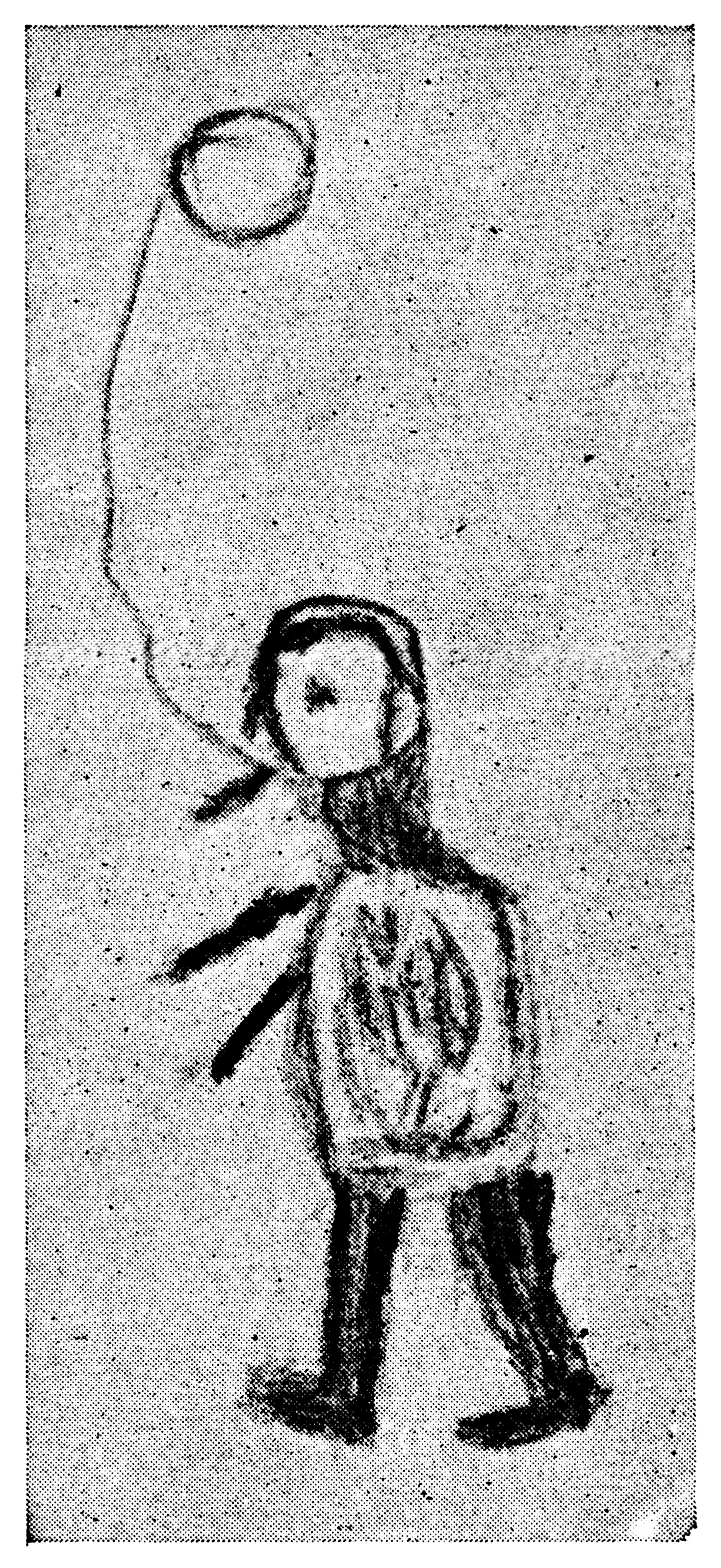
Lips’s book arrived at a time in anthropology when ideas about race, civilization, and culture were polarized, not only in Germany, but also in the United States and the rest of Europe as well. The debate in the United States, for example, pitted the newly emerging cultural relativism of Franz Boas and his students against the social Darwinist proponents of orthogenesis known as the Harvard School. Boas, who helped Lips secure a teaching position during the latter’s exile in America, suggested that the social, behavioral, and artistic patterns in a culture were not the product of some kind of natural, teleological design; rather, variation was the outcome of diverse factors—including diffusion, the spread of such patterns or cultural traits, often from multiple origins—governed as much by chance as by necessity.[13] But Boas at times also invoked ideas about independent innovation, the idea that some cultural forms are unique to a single cultural group. In that sense, he did not fully reject the evolutionary theory of Charles Darwin; he agreed that evolution created the basic means to have culture, but emphasized that it did not determine culture’s ultimate form, or the pathways for arriving at that form. The chief target of this argument was in fact social Darwinism, whose adherents, he felt, were engaged in “bad” science and had inserted their own racist teleology into their interpretations of evolutionary theory. The advocates of a more social Darwinist approach to ideas of race and human culture, however, were influential in North America and Europe, even if anthropology itself was increasingly moving toward the Boasian perspective.
In the case of 1930s Germany, it would be reductive to state that the Nazis relied on the authority of the scientific findings of German ethnologists to underpin their national racial ideology. Indeed, the main thrust of this ideology came not from the science of anthropology but rather from a tradition of racial “mysticism,” represented by works such as Houston Stewart Chamberlain’s enormously important 1899 book, Die Grundlagen des neunzehnten Jahrhunderts, later published in English as The Foundations of the Nineteenth Century. Yet once established, the predilections of the Nazi regime led them to favor those anthropologists whose work bolstered their preferred stance.
One such anthropologist was Leo Frobenius, who rose to prominence not because he traveled in Africa extensively and brought hundreds of artifacts back to Germany, nor because he awakened many Europeans to the presence of African art, but because he theorized an ancient white civilization—an “African Atlantis”—that was responsible for the achievements of African culture and that had disappeared, leaving only a “degenerate” black population to manage its wondrous legacy. In the presence of the canonical Benin bronzes, Frobenius wrote: “I was moved to silent melancholy at the thought that this assembly of degenerate and feeble-minded posterity should be the legitimate guardians of so much classic loveliness.”[14]
Given this scholarly state of affairs, it is hardly surprising that The Savage Hits Back was received poorly in German academic circles, but it also met with mixed reviews elsewhere. Racist anthropology was hardly unique to Germany; in the United States and Britain too, the discipline accommodated racist views and the blithe categorization of African culture as primitive or savage. When Lips’s book came out in 1937, some critics responded querulously to the idea that colonialism might have had a negative impact on the peoples colonized. British anthropologist Arthur E. Robinson, writing in the journal Man, opined that “the present writer considers that negro art is not original but imitative in character” and took Lips to task for ascribing a political motivation to the artists when one was, the reviewer asserted, neither warranted nor possible.[15] Robinson expressed disappointment that Lips had, in his opinion, sacrificed scientific dispassion in favor of a bold thesis. And it is true that some of Lips’s overbroad interpretations were easy targets for his critics.
For Robinson, the African artist was incapable of satire. Countering Lips, he writes that “the ordinary native of Africa has a keen sense of humour and justice. As a general rule he resents fines and imprisonments and prefers corporal punishment. He leads as a rule a normal healthy animal life. For these reasons crude specimens of human figures cannot be regarded as caricatures, censures, or lewd.” Robinson’s perspective was representative of the overwhelming sense among some scholars of the period that Africans lacked essential properties of intellectual sophistication. From this point of view, while they were capable of lower humor, one could not seriously imagine their art having parodic or satirical intent. These were not caricatures; they were simply poor drawings and carvings.
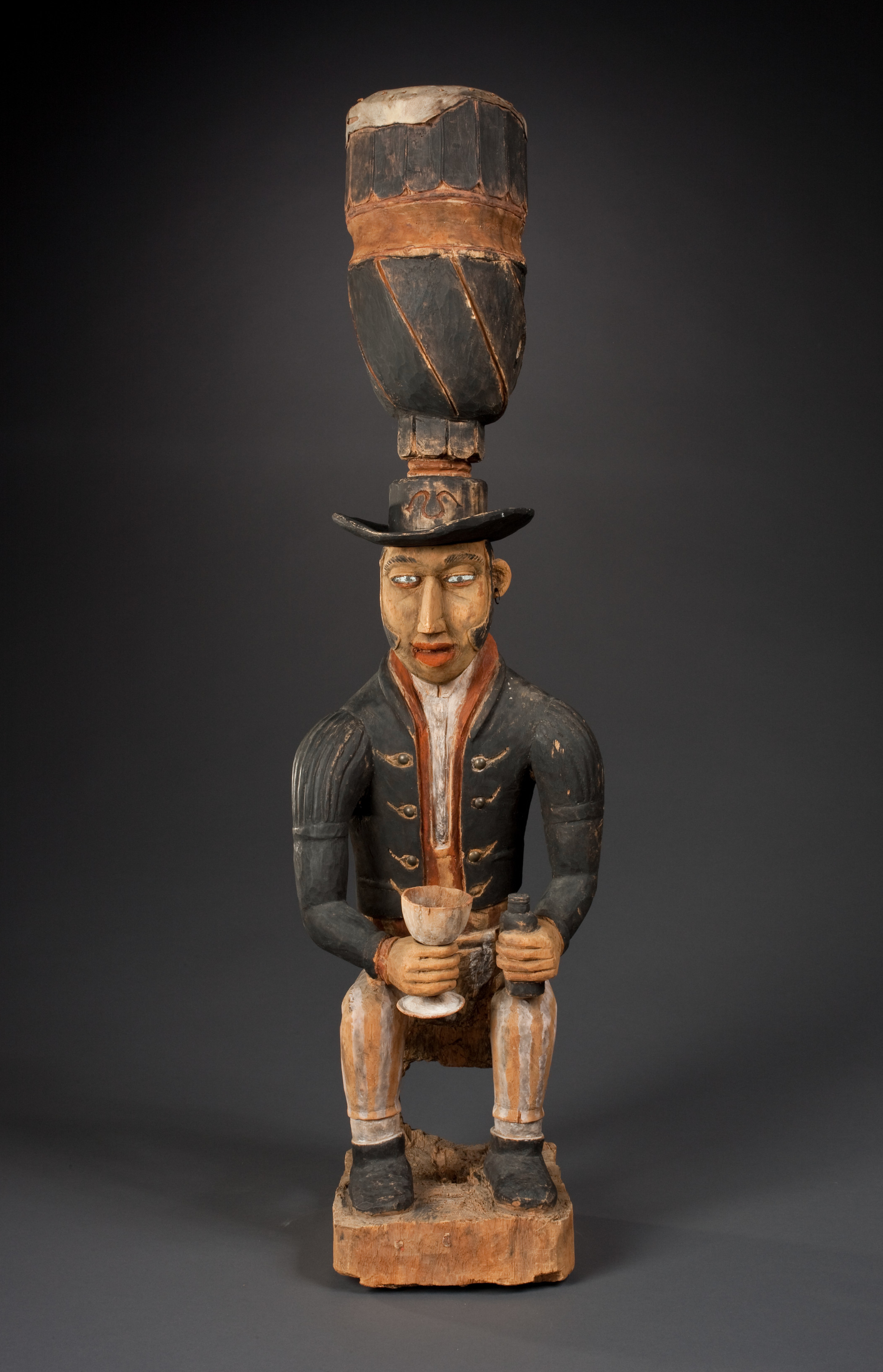
Charles T. Loram, a South African–born professor of education at Yale University, echoed Robinson in his review of the book. Writing in The American Historical Review, he asserted that, “with reference to the Africans, at least, with whom the writer of this review has had a life-long experience, it is extremely doubtful if what Professor Lips regards as caricatures of the white man are much more than the struggle of the poorly equipped artist with his difficult material.”[16] As Robinson had done, Loram accused Lips of lacking scientific objectivity and of failing to reach his conclusion through ethnographic methods, which would entail the artists themselves actively declaring that caricature and parody were intended.
With all that said, many reviews of Lips’s book—which appeared in a wide array of venues, from art history journals to anthropology publications—were on the whole positive. They demonstrated a keen awareness of what Lips’s book signified in that particular historical moment, a moment in which notions such as savagery and primitiveness were coming under scrutiny in the face of increasing “modern savagery” in Europe. Writing in 1938, Edwin Meyer Loeb, an anthropologist at the University of California, Berkeley, called Lips’s book “brilliant, witty, and often profound.”[17] Loeb even implies that Lips does not go quite far enough, and is still mired in the conventions of seeing non-Western people through a “primitivist” lens. He concludes his review: “Somewhat less fortunate, however, are certain of his generalizations concerning the religion and mentality of the savage. Why, for example, should the author consider primitive man to be “prelogical,” as he does in the second chapter, while in his preface he pays no great respect to the logic of certain present-day European rulers?”[18] Another reviewer, A. Philip McMahon, writing in Parnassus, praises not only Lips but his publishers, and concludes that the book is a “document which should be read by every historian and anthropologist.”[19]
Undoubtedly there were limitations to Lips’s project. He wrote his book in exile, away from his library and under the duress of an accelerated schedule. And the scope of the project, which covers myriad cultures, was beyond the expertise of any single author. And yet The Savage Hits Back still stands as a paradigm-shifting work. Indeed, it would not be exaggerating to say that Lips was, in a sense, a postcolonialist avant la lettre.
While Lips had concentrated his attention most intensively on Africa, Australia, and the Pacific Islands, he considered his audience as those “interested in finding out how the Western world and its civilization are mainly reflected in the art of primitive tribes.”[20] His project neatly exemplifies, and yet attempts to transcend, what anthropologist Michel-Rolph Trouillot has famously termed “the savage slot,” that necessarily conceptual space of primitive otherness that not only helped define the ever-expanding West as its horizons grew, but prefigured the rise of anthropology itself as the discipline tasked to objectively understand a category it had constructed and then assumed to be real.[21]
There has, of course, been both a softening of disciplinary boundaries over the course of the last eighty years and an evolving sense of the relationships between the West and the rest of the world. Even the very terms we use have shifted, and now include reconceptualized categories such as the Global North and the Global South. But Lips’s work was an early challenge to problematic notions of center and periphery. In his time, there were fairly clear rules about which cultural material belonged in an art museum and which in a museum of ethnography or “natural history.” Lips’s work stands at the start of an inquiry, one that continues to this day, about what goes where.
- The last few years have seen a revival of interest in Lips. See, for instance, Pierre Centlivres, “Julius Lips et la riposte du sauvage: L’homme blanc vu par les indigènes,” in Terrain: Carnets du patrimoine ethnologique, no. 28 (1997); Anna Brus, “Julius Lips und die zeitgenössische globale Kunst,” in Zeitschrift für Kulturwissenschaften, vol. 9, no. 2 (January 2015); and Anna Brus, Lucia Halder, and Clara Himmelheber, “Der Wilde schlägt zurück”: Kolonialzeitliche Europäerdarstellungen der Sammlung Lips (Berlin: Edition Imorde, 2018). Brus’s forthcoming edited volume, titled “The Savage Hits Back” Revisited: Art and Alterity in the Colonial Encounter (Berlin: Reimer), builds on the 2018 co-edited publication, which accompanied an exhibition of the same name at the Rautenstrauch-Joest Museum in Cologne.
- Eva Lips, Savage Symphony: A Personal Record of the Third Reich, trans. Caroline Newton (New York: Random House, 1938), pp. 10–23.
- Ibid., p. 14.
- Stephanie Barron, “Degenerate Art”: The Fate of the Avant-Garde in Nazi Germany (Los Angeles: Los Angeles County Museum of Art; New York: Harry N. Abrams, 1991), p. 10.
- Harry Hansen, “The Cruelty of Nazis Revealed by Wife of ‘Aryan’ Scientist: Persecution of ‘Politically Unreliable’ Museum Head Began When He Found Race Myth Ridiculous,” The Pittsburgh Press, 10 April 1938.
- For more on German anthropologists’ accommodation of Nazi ideology, see Gretchen E. Schafft, From Racism to Genocide: Anthropology in the Third Reich (Urbana: University of Illinois Press, 2004), pp. 74–77.
- Eva Lips, Savage Symphony, p. 334.
- Adolf Ziegler, speech delivered on 19 July 1937 at the opening of the “Degenerate Art” exhibition. Translated by Lilian Friedberg in The Third Reich Sourcebook, ed. Anson Rabinbach and Sander Gilman (Berkeley: University of California Press, 2013), pp. 500–503.
- Julius E. Lips, The Savage Hits Back, or, The White Man through Native Eyes, trans. Vincent Benson (London: Lovat Dickson, 1937), p. xxi. The book was published in the United States by Yale University Press in the same year.
- Bronislaw Malinowski, “Introduction,” in Julius E. Lips, The Savage Hits Back, p. vii.
- Ibid.
- Ibid., p. viii.
- For more on Boas’s involvement in securing an academic position for Lips, see Berndt Ostendorf, “Field Trip into the Twilight: A German Africanist Discovers the Black Bourgeoisie at Howard University, 1937–1939,” in Germans and African Americans: Two Centuries of Exchange , ed. Larry A. Greene and Anke Ortlepp (Jackson: University Press of Mississippi, 2010), p. 91: “In May 1934 Lips was admitted to the United States on the basis of a letter of invitation by Franz Boas and he found a temporary academic home at Columbia University. In his request to Boas, Lips claimed not quite correctly that ‘he gave up his job voluntarily’ because he could no longer live in ‘this prison house of the mind.’” This information comes from two letters from Lips to Boas, written on 12 June 1933 and 25 February 1934. Additionally, see Diego Villar, “Julius Lips, précurseur de l’anthropologie inversée” (2021), in Bérose: Encyclopédie internationale des histoires de l’anthropologie. Villar writes: “Là-bas, Lips renoue avec l’anthropologie au sein du prestigieux cercle de Franz Boas—l’un des pères de l’anthropologie nord-américaine, d’origine allemande, avec lequel il partage, outre la nationalité, l’attachement au prosélytisme de la Ligue germano-américaine de la culture.” (There, Lips reconnected with anthropology within the prestigious circle of Franz Boas—one of the fathers of North American anthropology, of German origin, with whom he shared, in addition to nationality, an attachment to the proselytism of the German-American League for Culture.) The German-American League for Culture, founded in 1935, was opposed to Nazism. Villar’s article is available at www.berose.fr/article2397.html.
- Leo Frobenius, The Voice of Africa: Being an Account of the Travels of the German Inner African Exploration Expedition in the Years 1910–1912, trans. Rudolf Blind (London: Hutchinson, 1913), p. 98.
- Arthur E. Robinson, review of The Savage Hits Back, or, The White Man through Native Eyes, Man, vol. 38, no. 101–141 (July 1938), p. 112.
- Charles T. Loram, review of The Savage Hits Back, or, The White Man through Native Eyes, The American Historical Review, vol. 44, no. 2 (January 1939), pp. 317–318.
- Edwin M. Loeb, review of The Savage Hits Back, or, The White Man through Native Eyes, The Annals of the American Academy of Political and Social Science, vol. 196 (March 1938), p. 264.
- Ibid.
- A. Philip McMahon, “New Books on Art,” Parnassus, vol. 9, no. 7 (December 1937), p. 30.
- Julius E. Lips, The Savage Hits Back, p. xiii.
- See Michel-Rolph Trouillot, Global Transformations: Anthropology and the Modern World (New York: Palgrave Macmillan, 2003), pp. 7–28.
James G. Harper is director of Museum Studies and associate research professor of art history at the Pennsylvania State University. His research interests include political propaganda and the role of exoticism in the early modern period. He is the author of The Barberini Tapestries: Woven Monuments of Baroque Rome (Officina Libraria, 2017), co-author of Giuseppe Vasi’s Rome: Lasting Impressions from the Age of the Grand Tour (University of Delaware Press, 2010), and editor of The Turk and Islam in the Western Eye, 1450–1750: Visual Imagery before Orientalism (Ashgate, 2011).
Philip W. Scher is a cultural anthropologist, folklorist, and dean of the College of Arts and Sciences at University of Massachusetts-Dartmouth. He is the editor of Perspectives on the Caribbean: A Reader in Culture, History, and Representation (Wiley-Blackwell, 2009), co-editor of Trinidad Carnival: The Cultural Politics of a Transnational Festival (Indiana University Press, 2007), and author of Carnival and the Formation of a Caribbean Transnation (University Press of Florida, 2003). His book on the politics of cultural heritage in Barbados will be published by Routledge in 2026.